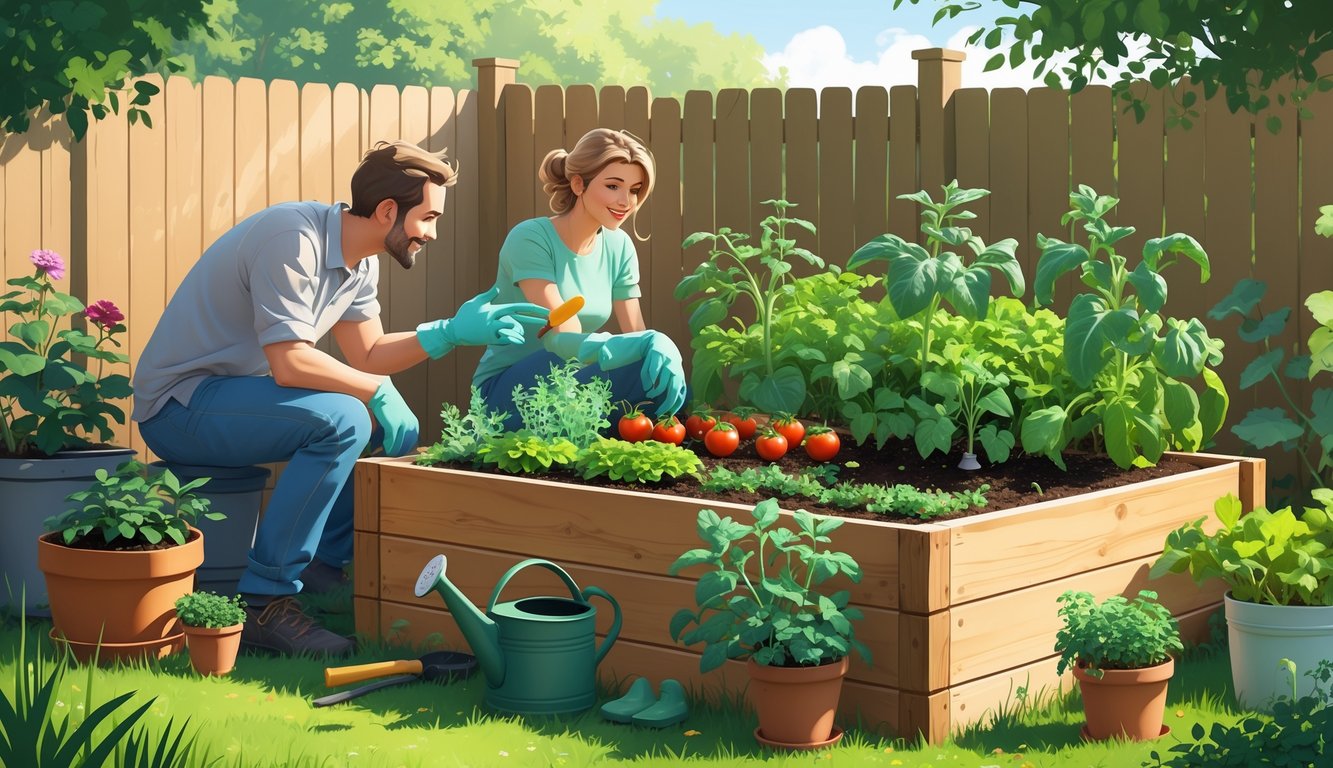
Selecting Materials: Wood, Metal, and More
Sawdust in my shoes, splinters in my hands—setting up raised beds means I’ve tried every “genius” material. The boards aren’t just holding dirt, they’re holding your sanity together. Wood, metal, stone, plastic—each one’s a gamble on cost, hassle, and how soon you’ll curse at warping corners.
Comparing Wood Types for Durability
Pressure-treated pine is everywhere, but you hear whispers about chemicals. Most new stuff uses copper azole, so honestly, I stopped worrying. Untreated pine? Cheap, but I swear it started rotting before the tomatoes sprouted. Rot-resistant woods—cedar, redwood, black locust—cost a fortune, but they last. I saw a post about thin boards bending and attracting ants, so now I only buy 2-inch thick stuff, even if it hurts my wallet. There’s a wood comparison chart that basically says you get what you pay for.
Metal and Stone Options
Aluminum, corrugated steel, even old shipping containers—I’ve tried most of it. Metal outlasts wood, but it’ll burn your hands on hot days unless you paint or insulate. Galvanized steel is decent if you get the thick kind, but thin stuff buckles fast—learned that after a hailstorm. Stone? Looks great, never moves, but “easy” is a lie. My back still hurts from hauling blocks. If you want forever beds and don’t mind a weekend of heavy lifting, stone or metal-framed beds are solid. Just not cheap.
Using Plastic and Recycled Lumber
Plastic’s weirdly underrated—good brands (Super Duty Composite, whatever that is) last longer than the chalky bargain stuff that flakes by year three. Everyone’s obsessed with “food-safe, BPA-free,” which is mostly fine unless you buy the super cheap, colored plastics. I used composite decking scraps once—lasted years, corners rounded off, but still better than rotten wood. Recycled plastic lumber is heavy, needs extra bracing, but termites ignore it and nothing outlasts it. If you care about sustainability, plastic and recycled options are good—especially now that scrap lumber costs more than my phone.
Designing and Building Raised Garden Beds
So, I thought building a raised bed would be a quick weekend thing—just toss some boards together, fill ’em up, and boom, garden. Yeah, right. Three hours later, I’m still arguing with myself about whether lettuce roots care if the soil’s eight inches deep or if I need to double it for tomatoes. And then my neighbor, who somehow always materializes when I’m mid-meltdown, says, “What if it floods?” Now I’m scavenging behind the shed for leftover cedar scraps because I refuse to pay full price for anything, especially lumber. Untreated cedar, by the way, is the only thing that doesn’t rot instantly—pressure-treated wood just feels sketchy. And seriously, nobody warns you about how many screws you’ll burn through. If you think you’re just making a rectangle and calling it a day, wait until your corners collapse after the first rain and you’re out there cursing at mud.
Deciding on Bed Size and Depth
I tried copying those picture-perfect beds from gardening blogs. Mistake. Couldn’t even reach the middle—lost a trowel back there, never found it. Don’t go wider than four feet. Three is better, especially if you’ve got short arms, or kids. Shallow beds? Like, six inches? That’s a joke for root crops. Carrots, onions, beets—they want a foot or more of fluffy, decent dirt. I read some random guide that said potatoes grow in eight inches. Lies. My potatoes came out looking like thumbs.
And don’t get me started on bottoms—solid, open, lined, unlined. Skip lining and you’ll just be feeding voles all summer. Everyone online swears pine is fine. It’s not, unless you think “fine” means “rotted in two seasons.” If you live somewhere damp, spend the extra on wood that doesn’t dissolve. And those elevated beds on legs? Sure, your back will thank you, but the soil dries out so fast you’ll be watering at dawn in your slippers. I do. Every time. There’s no magic formula for bed size or depth. Just try stuff and ignore what looks cute on Instagram.
Planning Raised Bed Layouts
I always think I left enough space. Never do. Drew up a plan on a pizza box, then jammed the beds so close together I couldn’t get my wheelbarrow through. Wheelbarrow almost flipped, I almost quit. Give yourself at least 18 inches between beds—two feet is better. If you want to get a mower or a cart in there, leave even more. Doesn’t matter how pretty your layout is from above if you’re stuck hopping over mud puddles.
And symmetry? Forget it. Plants don’t care. Ruth Stout (she’s some garden legend, apparently) always put her beds with the long side facing south for sun. My fence blocks half the light, so I just gave up and went rogue. Seriously, measure your space. You’ll be wrong the first time. If you’re stacking beds, stagger them or you’ll accidentally make a wind tunnel.
Rocky ground? Slopes? Don’t bother leveling. Just wedge some bricks under the low end and call it “charm.” Perfect grids are for YouTube, not real life. Layout is about not tripping over hoses and figuring out where your dog won’t dig up your seedlings.